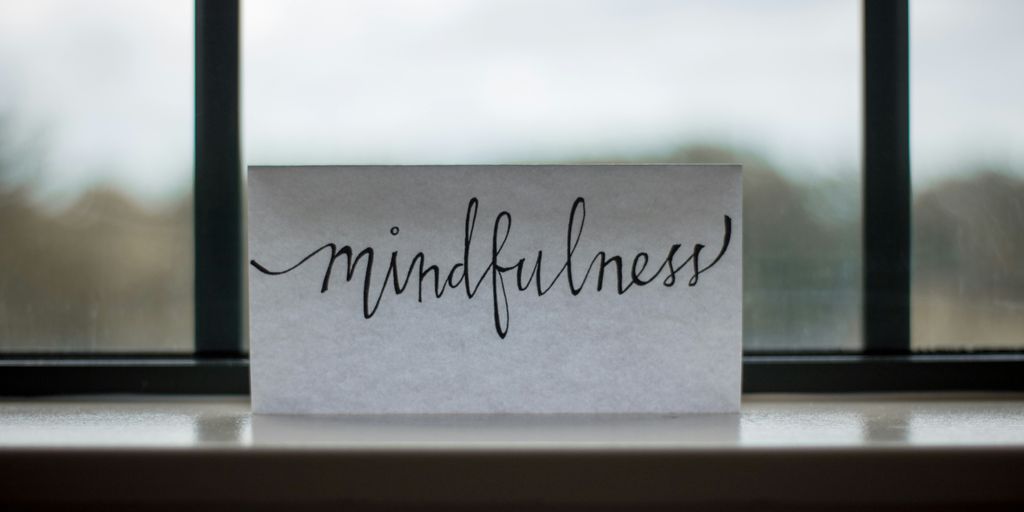
How to Effectively Use a Yoga Mat on Carpet for Your Home Practice
Practicing yoga on a carpet at home can be both convenient and comfortable. However, it comes with its own set of challenges. From choosing the right mat to ensuring you don't slip, there are several things to consider. This guide will help you make the most of your yoga practice on carpeted floors.
Key Takeaways
- Pick a yoga mat that works well on carpet, focusing on material, thickness, and grip.
- Prepare your carpet by cleaning it and using a rug pad to keep your mat in place.
- Try different ways to stop your mat from slipping, like using non-slip mats or DIY hacks.
- Add extra comfort by using props or layering mats, and adjust your practice as needed.
- Take care of your yoga mat by cleaning it often and storing it properly to make it last longer.
Choosing the Right Yoga Mat for Carpeted Floors
Material Considerations
When selecting a yoga mat for carpeted floors, the material is crucial. Natural rubber mats offer excellent grip and durability, while PVC mats are lightweight and easy to clean. TPE mats are an eco-friendly option that provides a good balance of comfort and stability.
Thickness and Cushioning
The thickness of your yoga mat can significantly impact your practice on carpet. A mat that is too thin may not provide enough support, while one that is too thick can make balancing poses more challenging. Aim for a mat that is between 4mm to 6mm thick for optimal cushioning and stability.
Grip and Stability
Grip and stability are essential for a safe yoga practice. Look for mats with a textured surface to prevent slipping. Some mats also feature a non-slip bottom layer, which can be particularly beneficial on carpeted floors. Stability is key to maintaining proper alignment and preventing injuries during your practice.
Choosing the right yoga mat for carpeted floors can enhance your practice by providing the necessary support and stability. Take the time to consider the material, thickness, and grip to find the perfect mat for your needs.
Preparing Your Carpet for Yoga Practice
Cleaning and Maintenance
Before you start your yoga practice, it's important to keep your carpet clean. Vacuum the carpet to remove dust and dirt. This will help you avoid allergies and keep your yoga mat clean. If you have pets, make sure to clean up any pet hair.
Using a Rug Pad
A rug pad can help keep your yoga mat in place. It adds an extra layer of grip and prevents your mat from sliding. Choose a rug pad that fits the size of your mat. This will make your practice safer and more comfortable.
Securing the Area
Make sure the area where you practice is safe. Remove any small objects or furniture that might get in the way. You can also use tape to secure the edges of your rug pad. This will help keep everything in place while you practice.
Techniques to Prevent Slipping and Sliding
Practicing yoga on carpet can be tricky if your mat keeps moving around. Here are some tips to help you stay steady.
Non-Slip Mat Options
To prevent slipping on your yoga mat, choose one with a non-slip surface and proper thickness. Regular cleaning is essential to maintain grip, and using a yoga mat towel can enhance stability. Engage your core and glutes for better balance, and consider grip-enhancing products. By following these tips, you can enjoy a safer and more effective yoga practice.
DIY Solutions
If you don't want to buy a new mat, there are some do-it-yourself solutions. You can use a rug pad under your mat to keep it from moving. Another option is to place a towel or blanket under the mat for extra grip. These simple tricks can make a big difference.
Proper Alignment
Proper alignment is key to staying steady on your mat. Make sure your hands and feet are placed correctly. Spread your fingers and toes wide to create a strong base. This will help you stay balanced and prevent slipping. Practicing good alignment can also improve your overall yoga practice.
Enhancing Comfort and Support
Practicing yoga on carpet can be a unique experience. Here are some tips to make it more comfortable and supportive.
Using Additional Props
Adding props like yoga blocks, bolsters, and blankets can provide extra support and comfort. These props can help you maintain proper alignment and reduce strain on your joints.
Layering Mats
Consider layering two mats for extra cushioning. This can be especially helpful if your carpet is thin or hard. A portable floor like the Lifeboard can also enhance your practice by providing a stable surface.
Adjusting Your Practice
You might need to adjust your poses slightly when practicing on carpet. Focus on maintaining balance and stability. Take your time to find the right alignment and avoid any discomfort.
Practicing yoga on carpet can be both comfortable and supportive with the right adjustments and props.
Caring for Your Yoga Mat on Carpet
Regular Cleaning Tips
To keep your yoga mat in top shape, it's important to clean it regularly. Wipe down your mat after each use with a gentle cleaner. This helps remove sweat and dirt, keeping it fresh and hygienic. For a deeper clean, you can wash it with mild soap and water, but make sure to rinse thoroughly and air-dry it completely before rolling it up.
Storage Solutions
Proper storage can extend the life of your yoga mat. Roll up your mat and store it in a cool, dry place. Avoid direct sunlight, as it can cause the material to break down over time. Using a mat bag can also protect it from dust and damage.
Extending Mat Lifespan
To make your yoga mat last longer, consider using a mat towel. This not only adds a layer of protection but also enhances grip and absorbs sweat. Additionally, always ensure your mat is completely dry before storing it to prevent mold and mildew.
Taking good care of your yoga mat ensures a better practice experience and helps you get the most out of your investment.
Adapting Yoga Poses for Carpeted Surfaces
Practicing yoga on carpeted floors can be a unique experience. Here are some tips to adapt your poses effectively.
Balancing Poses
Balancing poses can be tricky on carpet. The soft surface can make it harder to find your center. Focus on engaging your core to help maintain stability. You might also want to practice near a wall for extra support.
Seated and Supine Poses
Carpet can be more comfortable for seated and supine poses. The extra cushioning can protect your joints. However, make sure your mat doesn't bunch up. Smooth it out before starting your practice to avoid any discomfort.
Standing Poses
Standing poses require a firm foundation. On carpet, your feet might sink in, making it harder to balance. Spread your toes wide and press firmly into the mat. This will help you stay grounded and stable.
Practicing on carpet can enhance your focus and make you more aware of your body's alignment. Embrace the challenge and use it as an opportunity to improve your practice.
Benefits of Practicing Yoga on Carpet
Practicing yoga on a carpeted floor offers several unique benefits that can enhance your overall experience and well-being. Here are some key advantages:
Joint Protection
One of the most significant benefits of practicing yoga on carpet is the added joint protection. The soft surface of the carpet provides extra cushioning, which can help reduce the impact on your knees, wrists, and other joints. This is especially beneficial for those with joint issues or those who are new to yoga.
Enhanced Relaxation
Carpeted floors can create a more comfortable and cozy environment for your yoga practice. The softness underfoot can help you feel more relaxed and at ease, making it easier to focus on your breath and movements. Enhanced relaxation can lead to a more effective and enjoyable practice.
Improved Focus
Practicing yoga on carpet can also help improve your focus. The slight instability of the carpet can challenge your balance and concentration, encouraging you to be more mindful of your movements. This can lead to better alignment and a deeper connection with your practice.
Practicing yoga on carpet can offer unique benefits that enhance your overall experience, from joint protection to improved focus.
Practicing yoga on a carpet can be a game-changer. It offers extra cushioning for your joints and helps you stay grounded during poses. Plus, it's super convenient since you don't need a separate mat. Ready to enhance your yoga routine? Check out our amazing selection of yoga mats and accessories on our website!
Conclusion
Practicing yoga on a carpet with a yoga mat can be a great way to stay fit and relaxed at home. By choosing the right mat, keeping it clean, and making sure it doesn't slip, you can enjoy your yoga sessions safely and comfortably. Remember, the key is to find what works best for you and stick with it. With a little effort and the right setup, your home can become a perfect place for your yoga practice. So, roll out your mat, take a deep breath, and enjoy your journey to better health and peace of mind.
Frequently Asked Questions
Can I use any yoga mat on carpet?
While you can use any yoga mat on carpet, some mats work better than others. Look for mats with good grip and thickness.
How do I stop my yoga mat from slipping on carpet?
To prevent slipping, you can use a non-slip mat, place a rug pad underneath, or try DIY solutions like using double-sided tape.
Is it safe to do yoga on carpet?
Yes, it's safe to do yoga on carpet, but you need to make sure your mat is secure and the area is clean to avoid any injuries.
What thickness is best for a yoga mat on carpet?
A thicker mat, around 6mm to 8mm, is usually best for carpeted floors as it provides extra cushioning and support.
How do I clean my yoga mat?
You can clean your yoga mat with a mixture of water and mild soap. Wipe it down and let it air dry completely before rolling it up.
Can I use extra props on carpet?
Yes, using extra props like blocks and bolsters can help enhance your practice on carpet by providing additional support and stability.


